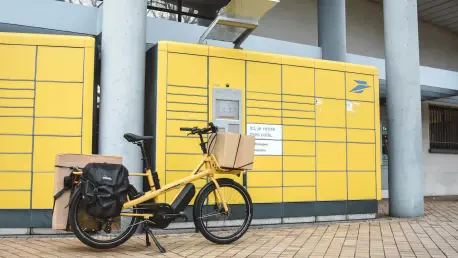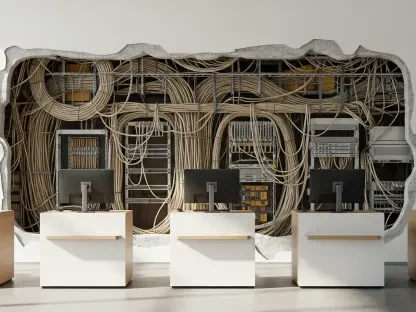Introduction
In an era where e-commerce continues to surge, with millions of parcels delivered daily across the globe, the challenge of creating sustainable and efficient delivery systems has never been more pressing, especially as the environmental impact of logistics grows. Coupled with the demand for accessible and secure delivery options, this calls for innovative solutions that can balance convenience with eco-friendliness. Solar-powered parcel lockers have emerged as a potential game-changer, promising to reduce carbon footprints while enhancing delivery flexibility.
This FAQ article aims to explore the transformative potential of solar-powered lockers in the parcel delivery industry by addressing key questions surrounding their functionality, benefits, and implementation. Readers can expect to gain insights into how this technology operates, its advantages for consumers and businesses, and the broader implications for sustainability. By delving into these topics, the content seeks to provide a comprehensive understanding of whether these lockers can indeed reshape the future of logistics.
The scope of this discussion includes an examination of cutting-edge advancements, real-world applications, and the challenges that accompany such innovations. With a focus on a pioneering example from the industry, this article will shed light on how solar-powered solutions are being tested and adopted, offering a glimpse into their potential to address modern delivery demands.
Key Questions or Key Topics
What Are Solar-Powered Parcel Lockers and How Do They Work?
Solar-powered parcel lockers are secure storage units designed for parcel delivery and retrieval, operating entirely off-grid through solar energy and autonomous battery systems. Unlike traditional lockers that rely on electrical grid connections, these units harness solar power to run their systems, ensuring functionality even in remote or low-light conditions through smart energy-saving cycles. Their purpose is to provide a sustainable alternative to conventional delivery methods, reducing energy consumption and environmental impact.
The technology behind these lockers includes low-energy operating systems and built-in features like label printers and returns drop boxes, all powered by solar panels and batteries with remote monitoring capabilities. This setup allows for 24/7 operation without the need for external power sources, making them ideal for diverse locations. The design often incorporates rugged construction for outdoor durability, ensuring reliability in various weather conditions.
A notable aspect is the ease of installation, as these lockers require no anchoring or building work due to embedded stabilizers. This innovation not only cuts down on setup costs but also enables deployment in areas previously unsuitable for locker systems, expanding access to secure delivery options for a wider audience.
What Are the Benefits of Solar-Powered Lockers for Parcel Delivery?
The primary advantage of solar-powered lockers lies in their environmental impact, as they operate with zero CO₂ emissions during use, aligning with global sustainability goals. By eliminating reliance on grid electricity, these systems contribute to a reduced carbon footprint in the logistics sector, which is increasingly under scrutiny for its environmental toll. This makes them a compelling choice for companies aiming to meet net-zero targets.
Beyond sustainability, these lockers enhance accessibility and convenience for consumers and businesses alike. Their off-grid nature allows placement in remote or underserved areas, broadening the reach of secure parcel services. Features like half-width compartments for small items, consumer-to-consumer exchanges, and key handoffs further improve user experience by catering to diverse needs.
For operators and carriers, the benefits include reduced installation costs and greater flexibility in site selection, as no electrical permits or infrastructure are required. This facilitates faster network expansion and relocation, enabling logistics providers to adapt quickly to changing demands while maintaining reliable service through remote monitoring of energy systems.
What Challenges or Limitations Do Solar-Powered Lockers Face?
Despite their promise, solar-powered lockers encounter certain challenges that could impact widespread adoption. One significant concern is their dependence on sunlight for power, which may pose issues in regions with prolonged low-light conditions or harsh weather, even though smart standby cycles help mitigate this. Ensuring consistent performance under such circumstances remains a critical area for improvement.
Another limitation is the initial cost of development and deployment, which may be higher compared to traditional locker systems, despite savings on installation. While long-term energy cost reductions are a benefit, the upfront investment could deter smaller operators or businesses with limited budgets from embracing this technology. Scaling production to lower costs will be essential for broader market penetration.
Additionally, integrating these lockers into existing logistics networks requires coordination with carriers and partners to ensure seamless operation. Building trust in the reliability of solar-powered systems and educating stakeholders about their benefits are necessary steps to overcome resistance to change and foster acceptance in a competitive industry.
How Are Solar-Powered Lockers Being Implemented in the Industry?
A leading example of solar-powered locker implementation can be seen in a pilot program currently underway in the UK, where an innovative series of autonomous, solar-powered lockers is being tested. This initiative focuses on validating the technology’s performance in real-world conditions, ensuring that it meets the needs of consumers and operators alike. The pilot also aims to onboard carriers and partners to strengthen network collaboration.
These lockers are designed for durability and flexibility, with features that support a range of delivery and return scenarios, making them adaptable to various environments. Their showcase at a major industry expo in Amsterdam this year has provided professionals an opportunity to witness the technology firsthand, highlighting its potential to redefine parcel management practices.
Feedback from such programs is crucial for refining the technology and addressing any operational hiccups before full-scale rollout. The emphasis on sustainability and accessibility in this deployment reflects a growing trend in the industry toward solutions that prioritize both environmental responsibility and customer convenience, setting a benchmark for future innovations.
What Is the Future Outlook for Solar-Powered Lockers in Parcel Delivery?
Looking ahead, solar-powered lockers hold significant potential to become a staple in parcel delivery as sustainability becomes a core focus for logistics companies. Their ability to operate off-grid and reduce emissions aligns with global efforts to combat climate change, positioning them as a viable solution for meeting environmental regulations and corporate net-zero strategies over the coming years.
Advancements in solar technology and battery storage are expected to further enhance the efficiency and reliability of these systems, addressing current limitations related to weather dependency. As production scales and costs decrease, adoption rates are likely to rise, particularly if supported by incentives or policies that encourage green logistics practices between 2025 and 2030.
The integration of smart technologies, such as enhanced remote monitoring and data analytics, could also elevate the functionality of these lockers, providing operators with deeper insights into usage patterns and maintenance needs. This evolution points toward a future where solar-powered lockers not only transform delivery processes but also contribute to smarter, more sustainable urban planning.
Summary or Recap
Solar-powered parcel lockers stand as a promising innovation in the logistics sector, offering a blend of sustainability and practicality through off-grid operation and zero CO₂ emissions. Key benefits include enhanced accessibility, reduced installation costs, and consumer-focused features that cater to modern delivery needs. Challenges such as weather dependency and initial costs remain, but ongoing pilot programs and industry showcases demonstrate a commitment to overcoming these hurdles.
The implementation of this technology, as seen in current UK trials, underscores its potential to expand secure delivery networks while aligning with environmental goals. The future outlook suggests a growing role for these lockers in shaping eco-friendly logistics, supported by advancements in solar and smart technologies. This shift highlights a broader industry trend toward balancing efficiency with responsibility.
For those seeking deeper insights, exploring resources on sustainable logistics or attending industry expos can provide valuable information on the latest developments. Keeping abreast of pilot outcomes and technological updates will be essential for understanding how these solutions evolve to meet global demands.
Conclusion or Final Thoughts
Reflecting on the journey of solar-powered parcel lockers, their introduction marked a pivotal moment in redefining parcel delivery with a focus on sustainability and accessibility. The strides made through pilot programs and industry engagement showcase a clear path toward integrating eco-friendly solutions into everyday logistics.
Moving forward, stakeholders are encouraged to consider partnerships and investments that could accelerate the adoption of such technologies, ensuring that barriers like cost and scalability are addressed. Exploring how these lockers could fit into local delivery ecosystems or urban planning initiatives offers a practical next step for businesses and communities alike.
Ultimately, the impact of this innovation hinges on collective action, prompting a reevaluation of how delivery systems can align with environmental priorities. The potential for transformation is evident, inviting all involved to contribute to a greener, more efficient future in logistics.









